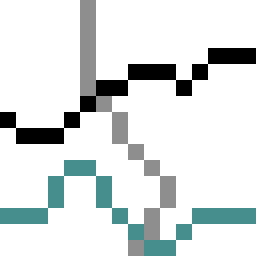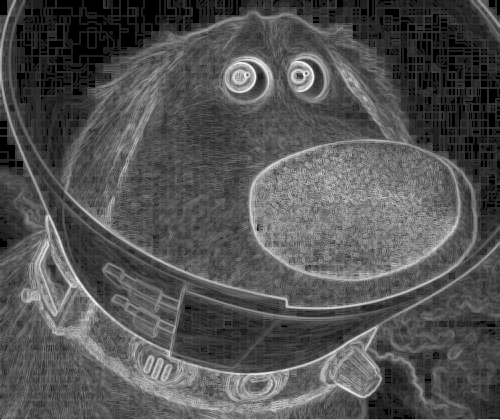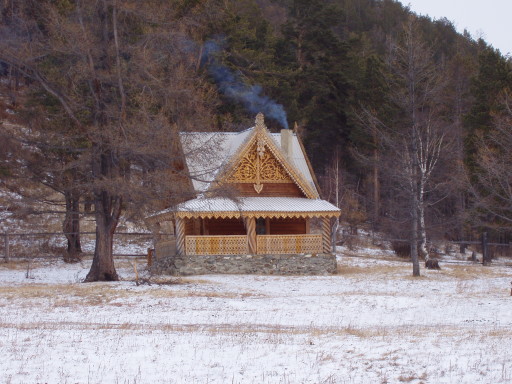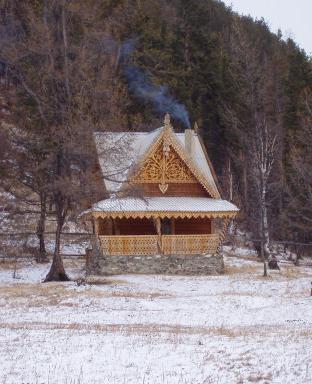
Seam examples. Black: horizontal seam. Gray: vertical seam. Green: not a seam -- contains more than one pixel from some columns.
One of the papers at SIGGRAPH that made news when it first came out was Seam Carving for Content-Aware Image Resizing by Shai Avidan and Ariel Shamir. In this assignment, you'll be implementing the basic algorithm presented therein. To wit, you'll be designing a program which can shrink an image (horizontally and/or vertically) to a given dimension. Your program should support the following usage
./seamcarving input_image output_image output_width output_heightAn executable of my program is at:
~adamb/public/SeamCarving/seamcarvingNote that image i/o can be painful with different apis for different libraries for different image formats. I recommend using The CImg Library, which works best with ImageMagick installed (note to windows folks, make sure "Install legacy utilities" is checked when installing ImageMagick), to ease your suffering and have included a stub program in the class git repo that, using this library, reads an RGB image in a variety of file formats, converts it to CIELAB color space, converts it back to RGB, and writes the result to either a png or jpeg depending on the extension of the output filename. Feel free to insert your seam carving code into this stub program after the conversion to CIELAB space and before the conversion back to RGB. Note that in the stub program the image array is in row-major order, not column-major or scanline order.
For a brief overview of the algorithm and some inspiring results, check out the video. Your algorithm will shrink images as follows:
Feel free to use any energy function in the paper (or cook up something on your own). Defining a good energy function seems to be the key to achieving good results.

A horizontal seam is a connected path from one side of the image to the other that chooses exactly one pixel from each column. (A vertical seam is the same, but from top to bottom and with rows.) Finding the lowest-importance seam is a simple dynamic programming exercise. If you find yourself spending large amounts of time on it, please ask the course staff for help.
Your final code should be able to, given an input image, produce an output image shrunk to the specified number of pixels. A simple way to achieve this goal is to write your code to shrink only in one dimension and then create a wrapper function that transposes the image to shrink in the other dimension. I also highly recommend outputing your an image of your energy function mapped to greyscale values. I set each pixel to pow(energy(i,j)/max_energy, 1.0/3.0). See below:




Notice how the content in the image is preserved, and the large, boring, area of blue sky is removed.


As you push the algorithm to its limits, artifacts -- such as shape distortions and odd cubist angles -- will begin to crop up. A lot of time on this project will be spent tweaking your code to mitigate these effects, as well as searching for pictures which don't exhibit them. Generally, highly-structured scenes and human faces will suffer, while scenes with textured objects on simple backgrounds will work better.


Turn in this assignment electronically by pushing your source code to your proj6 GitHub directory by 11:59 PM on the day of the deadline. We will be looking for multiple checkins documenting your development process.
As always, double check that you have submitted everything we need to build and run your submission, but no generated files (.o's, executables, or images). Be sure to include a Makefile that will build your project when we run 'make', and a readme.txt file telling us about your assignment. Do not forget to tell us what (if any) help did you receive from books, web sites or people other than the instructor and TA.